At odds with other ‘plants’ in our seas, seagrasses are true flowering plants with roots and leaves. They are incredibly important as one of our marine ecosystems that support our fisheries as nursery habitats and as carbon traps and storage vaults – so they have deservedly had their five minutes of fame in the media. We tend to hear less about the dwarf seagrasses though, they do have their own issues but are less disturbed by anchoring and moorings, and aren’t put on the same pedestal for supporting seahorses. In places though, they are more common than the ‘common seagrass’ … hiding in the plain sight of our more remote creeks.
We have three types of seagrasses in South Devon but only two species … one of the species has two forms, one that grows more below the tidal limits and one that grows more intertidally (note that I am choosing some words carefully as scientific discoveries do sometimes very much change our understanding). The species in question is Zostera marina, sometimes known as ‘common seagrass’ (at least for the larger subtidal form) because it was once so very common along our shores. But an historic wasting disease, probably made worse by water pollution, wiped out something like 90% of it.
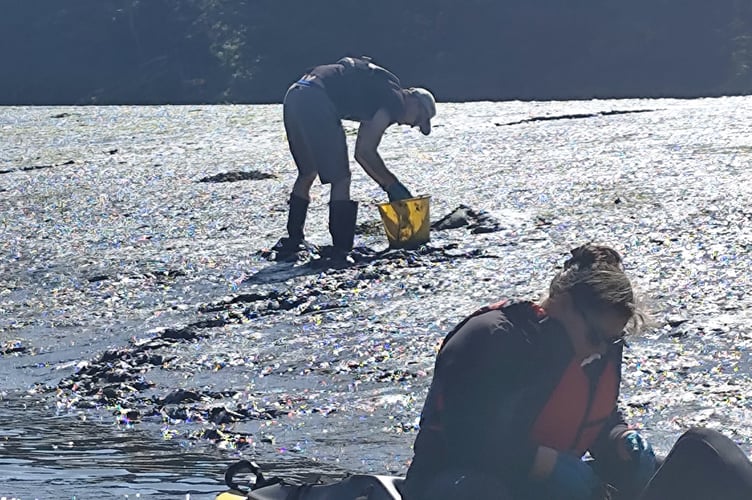
The good news, the really good news, is that for at least the third year running, we have observed a very significant increase in in the extent of our seagrasses – both in terms of distance reaching further up into the estuary and their density. Within the Salcombe-Kingsbridge Estuary, our local hotspot for dwarf seagrasses (there are also some sites within the Tamar Estuary), it has now entered up into Frogmore Creek and Southpool Creek, and where there were the occasional plants on the eastern shore heading up towards Blanksmill Creek (Newbridge), it is filling in the gaps towards becoming a fully functioning meadow. During a health check survey of the Saltstone, we even found it there now … in fact we also found a couple of subtidal plants, proving what a special and sensitive site it is and best viewed from afar.
This relatively sudden positivity does seem to be happening a bit across the southwest and in all honesty, none of us seem to know for sure but we are hopeful that it’s a good sign and not just a possible response to climate change effects. As a result, we are not however, reducing our efforts to conserve our seagrasses - such are their ecosystem importance and there being no surety of what may happen in the future.
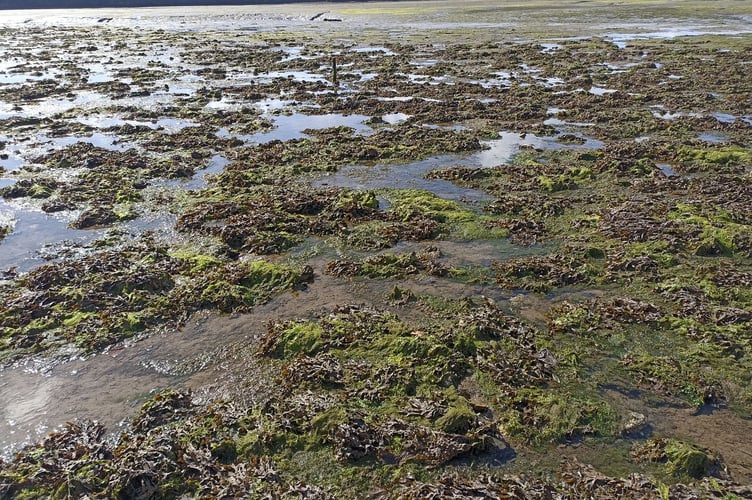
With still so little seagrass of what we once had, we consider it almost certain that many of our seagrass meadows must have been lost from our neighbouring estuaries and we are exploring helping and working with nature to return them. At other sites across the country and Europe, like minded colleagues are successfully trialling the harvesting of seagrass seed, overwintering them and then drilling the seed into mudflats using adapted ‘mastic skeleton guns’ filled with a seed & sediment mix.
We are now trialling for the first time, something different. For several years, in August time, we’ve noticed floating rafts of the dwarf form of the Z. marina plants – complete with roots, leaves and seedheads. So numerous are the floating plants, that I am daring to suggest that this may be a seed dispersal mechanism and certainly rafts of plants have been observed along our open coast and even some plants found drifting into the Yealm Estuary. So, after some years of planning and being very careful to comply with all rules and regulations (including any biosecurity threats), I and many volunteers have carefully harvested some of these floating plants, checked and cleaned them of foreign material, and replanted them in a neighbouring estuary in similar conditions.
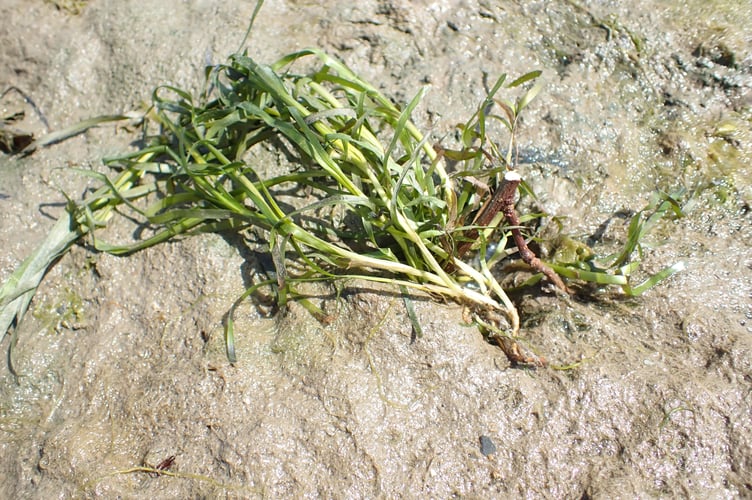
August may not be the best time to replant a plant that dies back overwinter but that’s the only time we find them floating freely and these plants have a rhizome that stores some of the food that the plant makes in the sun, and that we hope it will use to regrow next year. And even if that doesn’t work, we hope that the seeds from the plants will disperse locally and germinate naturally. We have some volunteers on paddleboards and rowing boats that will be keeping a keen eye on the Creek where the plants were planted.
-native-European-oyster-(right)---not-every-oyster-is-so-clear.jpeg?trim=0,0,0,0&width=752&height=500&crop=752:500)
Another less pleasant trial we are having to make is the managed control of Pacific oysters that have unusually found a way to thrive over what should be health dwarf seagrass meadows. Although now more accepted as a feral species across southern England, here they are attracting their own kind and giving a surface for perennial seaweeds to grow and further radically changing the mudflat seagrass community that should be there. The trial has been to push the oysters deep down into the mud to control them and as part of the formal agreements, is ongoing as I monitor the site to ensure that the buried oysters do not return to the surface. Crazy as it all sounds, this is the least damaging method we presently have on this soft sediment seagrass habitat, wearing special over-boots to spread our load and using long poles to reach the oysters and minimise our damaging footprints. So far so good, but at some point in the longer term future we will have to find another way before the deep mud fills up with oyster shells, along with a long history of our other ills and pollutants.

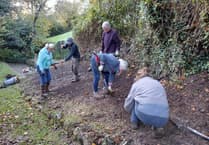

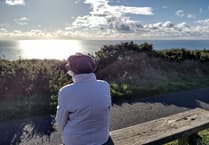

Comments
This article has no comments yet. Be the first to leave a comment.